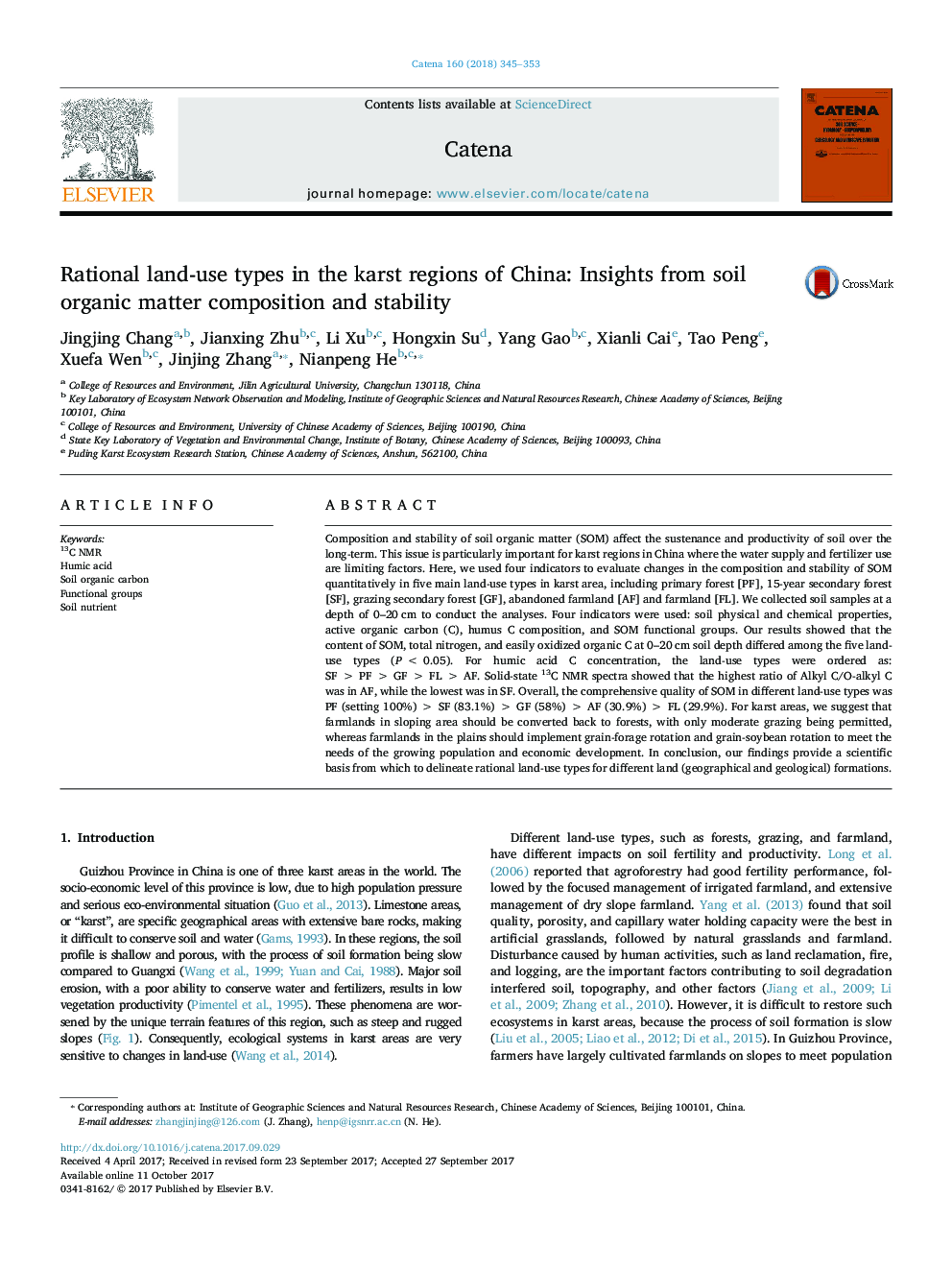| کد مقاله | کد نشریه | سال انتشار | مقاله انگلیسی | نسخه تمام متن |
|---|---|---|---|---|
| 5770051 | 1629194 | 2018 | 9 صفحه PDF | دانلود رایگان |
- Rational land-use in karst areas may enhance productivity, water, and fertilizer use.
- Improving SOM composition and structural stability could help sustain productivity.
- SOM composition and stability were the highest in primary forests and the lowest in farmland.
- For rational land-use in karst areas, farmers should rotated to increased production of food.
- Grazing levels on slopes should be moderate and reclaiming wasteland at slope should be prohibited.
Composition and stability of soil organic matter (SOM) affect the sustenance and productivity of soil over the long-term. This issue is particularly important for karst regions in China where the water supply and fertilizer use are limiting factors. Here, we used four indicators to evaluate changes in the composition and stability of SOM quantitatively in five main land-use types in karst area, including primary forest [PF], 15-year secondary forest [SF], grazing secondary forest [GF], abandoned farmland [AF] and farmland [FL]. We collected soil samples at a depth of 0-20Â cm to conduct the analyses. Four indicators were used: soil physical and chemical properties, active organic carbon (C), humus C composition, and SOM functional groups. Our results showed that the content of SOM, total nitrogen, and easily oxidized organic C at 0-20Â cm soil depth differed among the five land-use types (PÂ <Â 0.05). For humic acid C concentration, the land-use types were ordered as: SFÂ >Â PFÂ >Â GFÂ >Â FLÂ >Â AF. Solid-state 13C NMR spectra showed that the highest ratio of Alkyl C/O-alkyl C was in AF, while the lowest was in SF. Overall, the comprehensive quality of SOM in different land-use types was PF (setting 100%)Â >Â SF (83.1%)Â >Â GF (58%)Â >Â AF (30.9%)Â >Â FL (29.9%). For karst areas, we suggest that farmlands in sloping area should be converted back to forests, with only moderate grazing being permitted, whereas farmlands in the plains should implement grain-forage rotation and grain-soybean rotation to meet the needs of the growing population and economic development. In conclusion, our findings provide a scientific basis from which to delineate rational land-use types for different land (geographical and geological) formations.
Journal: CATENA - Volume 160, January 2018, Pages 345-353
